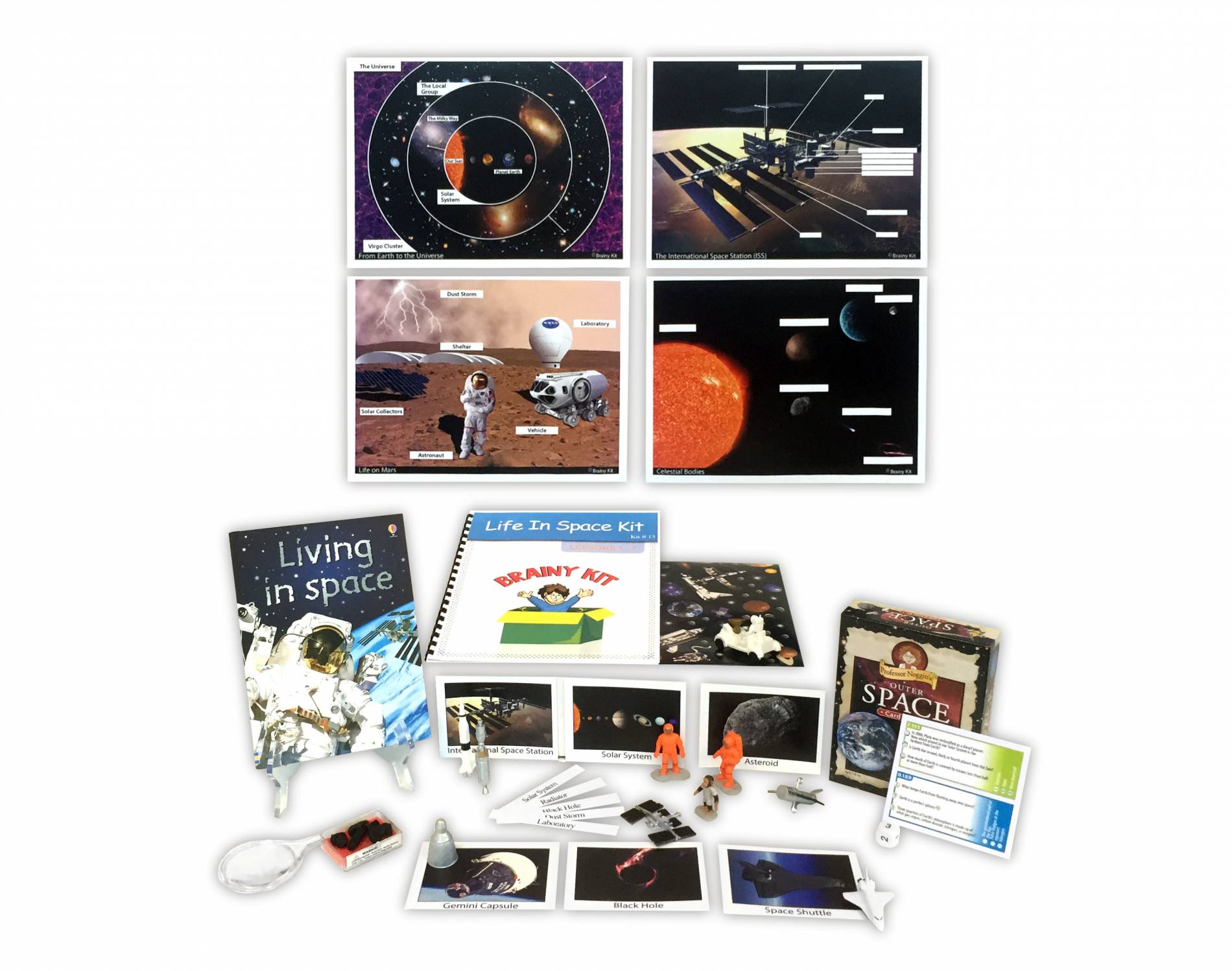You are purchasing a downloadable PDF file which contains the following materials:
- 7 complete lesson plans
- 8 charts
- 25 3 part cards
- 31 labels
The following items are not included but are available for purchase separately:
- Living in Space Book
- Space Figurines Tube
- Professor Noggin Outer Space Cards
- Meteorite Rocks
- A magnifying glass
The following item can be used to supplement this kit:
Life in Space
How much do you know about Life in Space? Humans have been looking up at the stars for eons but only started exploring space in the 1960’s. We have made huge progress in the past 50 years and each day the human race is getting closer to a Mars colony. But its not easy to get there… it takes work of countless engineers, scientists and of course space explorers – astronauts. Learn all about the science of space exploration, and discover NASA projections for the future with this Montessori Kit. Your generation will be the one to explore Mars… will you become an engineer or an astronaut who will help humanity take the next step? Life in space is best for ages 4 to 9.
Suggested price: $9.95
Suggested price: $9.95
Receive high quality Montessori materials that include everything you need to implement 7 hours of lesson plans and hours of extension activities. Feed your child’s curiosity and allow their natural love of learning to blossom. No preparation time for you – everything they need to learn is included in our complete kit, including a detailed instruction manual for you. Have fun learning with your child, subscribe or purchase individual kits today.
Life in Space Kit – Lesson 2 of 7
- Celestial Bodies – control chart
- Celestial Bodies – empty chart
- Cards – (Star, Dwarf Planet, Planet, Satellite, Asteroid, Comet, Black Hole)
- Labels – (Star, Dwarf Planet, Planet, Satellite, Asteroid, Comet, Black Hole)
- Montessori mat (if desired)
Purpose: Students will learn that there are different types of bodies that exist in space.
Vocabulary: Star, Dwarf Planet, Planet, Satellite, Asteroid, Comet, Black Hole, gravity
Suggested time: 45 min- 60 min
Activity
- Invite your student to join you at a workplace.
- Explain that gravity is an attractive force between all masses. The planets orbits the sun due to gravity. And in turn our entire solar system orbits the center of the milky way due to gravity.
- Ask, “If you throw an object in the air, what happens to it?” (it falls down). In space, however, gravity is weaker because you are too far from earth. The closer you get to an object the stronger is that object’s gravitational pull. Therefore, when astronauts are in space, they feel weightless.
- Planets: The criteria for being a planet is: It is in orbit around a Sun; it has sufficient mass to assume a nearly round shape; and, it has “cleared the neighborhood” around its orbit (no other objects are in the same orbit around the sun).
- Dwarf planet: A dwarf planet is a celestial body orbiting a star that is massive enough to be rounded by its own gravity but has not cleared its neighboring region of other celestial bodies and is not a satellite.
- Satelliteis an artificial object that has been intentionally placed into orbit by man or is naturally occurring (such as our moon).
- Asteroids are rocky, airless worlds that orbit our sun, but are too small to be called planets. Sometimes asteroids are attracted to earth by our gravity. If the asteroid enters our atmosphere, survives the entry into our atmosphere and hits our planet they are now called a meteorite. You will learn more about meteorites and the impact they have on earth later.
- Comets are dusty snowballs that orbit the Sun. They are made of many elements, such as water, carbon dioxide, ammonia and methane, mixed with dust.
- Black hole is a region of space having a gravitational field so intense that no matter or radiation can escape.
- Bring out the control chart and allow your student to look at it. Ask, “What do you notice?”
- Go over the cards (Star, Dwarf Planet, Planet, Satellite, Asteroid, Comet, and Black Hole) by pointing at them. Encourage your student to pronounce the name of each one and to discuss properties of each as they remember.
- Ask your student to sort the cards by size of the celestial body from smallest to largest.
- Next, bring out the control chart again as well as the chart without labels and have your student place the labels in the correct place by looking at the control chart.
- Remove the control chart, mix up the labels, and encourage your student to place the labels in the correct place without looking at the control chart.
Differentiated activities:
- Organize the celestial bodies from largest to smallest.
- Place the celestial bodies in alphabetical order.
Looking to save money? Subscribe today and save $10 off each Montessori kit.




